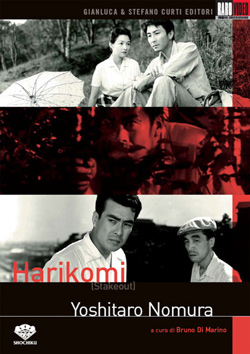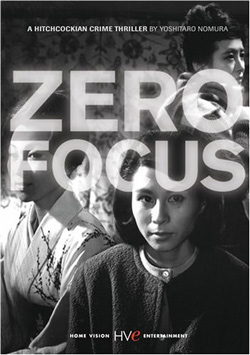 One can’t really describe the Japanese mystery writer Seichō Matsumoto by comparing him to his English language equivalent because, in all the ways that matter, he has no equivalent. (The writer Wolcott Wheeler once described him as “one part Raymond Chandler, one part John Steinbeck, and one part Gore Vidal”—which should give some sense of how hard he is to pin down.) A true original, more than any other writer in his country, he shaped the Japanese crime novel into a psychologically dense, multi-layered creation. In short, he made the crime novel a respectable form of literature.
One can’t really describe the Japanese mystery writer Seichō Matsumoto by comparing him to his English language equivalent because, in all the ways that matter, he has no equivalent. (The writer Wolcott Wheeler once described him as “one part Raymond Chandler, one part John Steinbeck, and one part Gore Vidal”—which should give some sense of how hard he is to pin down.) A true original, more than any other writer in his country, he shaped the Japanese crime novel into a psychologically dense, multi-layered creation. In short, he made the crime novel a respectable form of literature.
Like Chandler, he started publishing later in life—following a career in advertising and some military service in World War II. Unlike the notoriously unprolific Chandler, however, once he started publishing, Matsumoto became extraordinarily productive. An exact count of his books remains hard to come by, but it’s estimated that he wrote over forty novels, as well as short stories and books of Japanese history. Not bad for a guy who didn’t start publishing until he was forty-one. He had enormous success in his native country, but because few of his books have been translated into English, today he is probably best known around the world for his collaborations with the director Yoshitarō Nomura.
At the time, Nomura was still a largely unknown director at Shochiku studios. He had started out there as an assistant director in the early 50s, working with masters like Arika Kurosawa and Yûzô Kawashima, before going getting bumped up to the director’s chair himself. In 1958, he adapted a short story by Matsumoto about two cops assigned to watch the ex-girlfriend of a murder suspect. Over the course of their stakeout, however, one of the cops comes to have great sympathy for the woman, who seems to be locked in a loveless marriage. The resulting film (alternately titled Harikomi or The Chase, but best known as Stakeout) is quiet and meditative and avoids the usual genre traps—the cop doesn’t fall in love with the woman, nor does he become obsessed with rescuing her. Instead, the film is content to dramatize a very simple event: the gradual accruing of sympathy of one human being for another. Having said that, the movie has its flaws: it’s overlong and laboriously paced. Still, although it’s a minor work, Stakeout already shows Nomura’s innate feel for Matsumoto’s writing.
Between 1961 and 1984, Nomura produced seven more films based on Matsumoto novels including Zero Focus, The Shadow Within, Castle Of Sand, The Demon, and Suspicion. Although previous adaptations of Matsumoto’s work had already appeared (including Voice Without A Shadow by the wild man of Japanese cinema, director Seijun Suzuki), his work required a lighter directorial touch. It was in Nomura that he found his aesthetic soul mate.
Take, for instance, the wonderful Zero Focus from 1961. It concerns a young bride named Teiko Uhura who goes looking for her new husband when he disappears one week after their whirlwind courtship and marriage. Discovering that her husband was not the man he seemed to be, Teiko follows his trail all over Japan, her investigation leading her deeper and deeper into a world of crime. Beautifully played by Yoshiko Kuga, Teiko is a small and quiet—one might say mousey—woman who at first seems hopelessly out of her depth in this dangerous new world. Gradually, however, we see that beneath her fragile demeanor is a dogged spirit and a spine of steel.

What you see in Zero Focus is one of those rare, perfect blends of artistic sensibilities between writer and director. One thinks of John Huston’s adaptation of Dashiell Hammet’s The Maltese Falcon or Peter Yates adapting The Friends of Eddie Coyle by George V. Higgins. Perhaps the best point of comparison, however, is outside the realm of crime drama in the work of director Joseph Losey and playwright Harold Pinter. Like Losey and Pinter, Matsumoto and Nomura shared a vision of the world that was dark and foreboding and rather opaque. Beneath the obscuring layers of social decorum, one found ever-twisting emotional complexity, social dysfunction, and legal corruption. Their collaborations are not to be missed.
Matsumoto And Nomura Filmography
- Stakeout (1958)- Two cops watch an unhappily married woman for a week.
- Zero Focus (1961)- A young bride searches for her missing husband.
- The Shadow Within (1970)- A man becomes increasingly afraid of his girlfriend’s creepy six-year-old son.
- Castle of Sand (1973)- Two detectives attempt to solve the murder of a retired policeman.
- The Demon (1978)- A married man’s mistress dumps their three children at his doorstep and then disappears.
- The Wicked (1980)- A doctor seduces unhappy wives and helps them get rid of their husbands.
- Suspicion (1982)- Based on Matsumoto's 1981 novel Giwaku.
- The Politician (1984)- Based on Matsumoto's 1983 novel Meiso Chizu.
Jake Hinkson, the Night Editor, is the author of The Posthumous Man and Saint Homicide.

PS: You can stream ZERO FOCUS and STAKEOUT on Hulu. CASTLE OF SAND and THE DEMON are both on available as DVDs from Netflix.
Hi
Wow, this article is perfectly timed. I am just putting the finishing touches to a programme of Nomura / Matsumoto collaborations at the National Media Museum, UK: http://www.nationalmediamuseum.org.uk/BradfordInternationalFilmFestival/Promos/News/2014/BIFF2014SpecialProgrammes.aspx
There is so little written on Nomura, so I’m delighted to see this.
Tom
Fascinating piece, Jake. I’ve read a couple of Matsumoto’s books – Points and Lines aka Ten to Sen as well as Inspector Imanishi Investigates aka Sunsa no Utsuwa. Both superb. I’m gonna look for these films pronto.